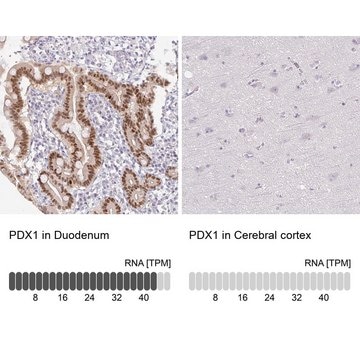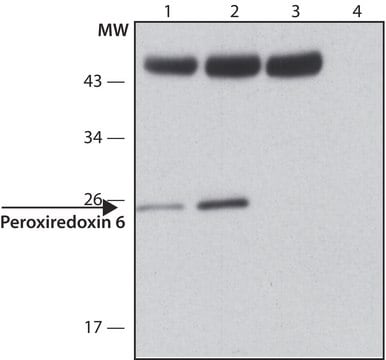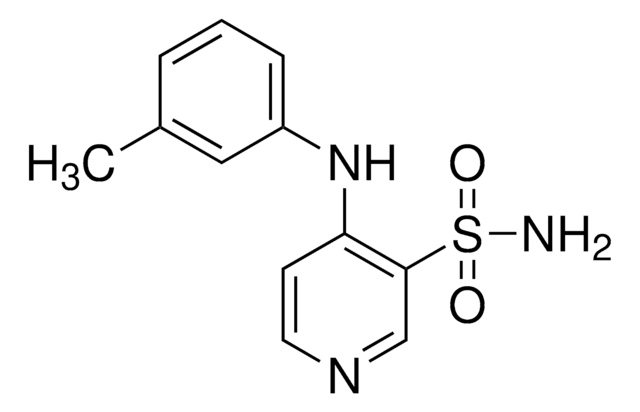MABT1350
Anti-Autotaxin (ENPP2) Antibody, clone 7A5
clone 7A5, from mouse
Sinónimos:
Ectonucleotide pyrophosphatase/phosphodiesterase family member 2, EC: 3.1.4.39, E-NPP 2, Extracellular lysophospholipase D, LysoPLD
About This Item
Productos recomendados
biological source
mouse
antibody form
purified antibody
antibody product type
primary antibodies
clone
7A5, monoclonal
species reactivity
mouse, human
packaging
antibody small pack of 25 μg
technique(s)
immunocytochemistry: suitable
immunohistochemistry: suitable (paraffin)
western blot: suitable
isotype
IgG1κ
NCBI accession no.
UniProt accession no.
target post-translational modification
unmodified
Gene Information
human ... ENPP2(5168)
General description
Specificity
Immunogen
Application
Immunohistochemistry Analysis: A representative lot detected Autotaxin (ENPP2) in Immunohistochemistry applications (Kaffe, E., et. al. (2017). Hepatology. 65(4):1369-1383).
Immunocytochemistry Analysis: A representative lot detected Autotaxin (ENPP2) in Immunocytochemistry applications (Kaffe, E., et. al. (2017). Hepatology. 65(4):1369-1383).
Western Blotting Analysis: A representative lot detected Autotaxin (ENPP2) in Western Blotting applications (Kaffe, E., et. al. (2017). Hepatology. 65(4):1369-1383).
Quality
Western Blotting Analysis: 0.2 µg/mL of this antibody detected recombinant human autotaxin.
Target description
Physical form
Other Notes
¿No encuentra el producto adecuado?
Pruebe nuestro Herramienta de selección de productos.
Certificados de análisis (COA)
Busque Certificados de análisis (COA) introduciendo el número de lote del producto. Los números de lote se encuentran en la etiqueta del producto después de las palabras «Lot» o «Batch»
¿Ya tiene este producto?
Encuentre la documentación para los productos que ha comprado recientemente en la Biblioteca de documentos.
Nuestro equipo de científicos tiene experiencia en todas las áreas de investigación: Ciencias de la vida, Ciencia de los materiales, Síntesis química, Cromatografía, Analítica y muchas otras.
Póngase en contacto con el Servicio técnico








